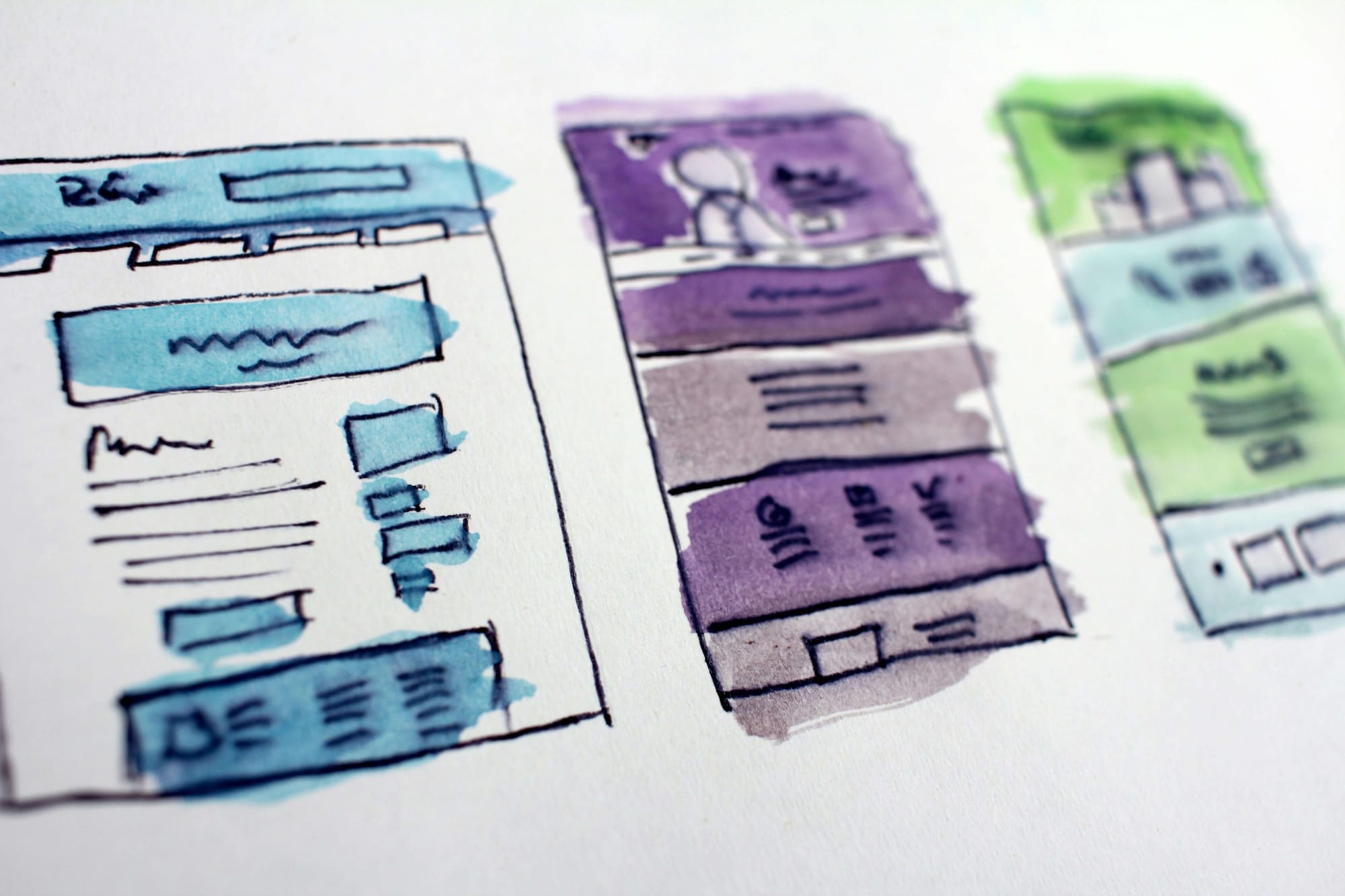
What Does it Really Mean to Build a ‘Community’ on Social Media? (And Why You Should)
How do you build a community on social media? And is it worth it? We asked both online community experts and community-building creators to share their expertise, so you can tap into this powerful approach.
Content Writer @ Buffer
Both creators and marketers alike are tapping into the power of fostering communities — and with good reason.
Cultivating deeper connections with and between your followers can inspire brand loyalty and boost brand awareness, engagement, growth, and reach — not to mention that it feels really great to bring like-minded people together around a shared purpose.
So how do you do it? And is it worth it? We asked both online community experts and community-building creators to share their expertise, so you can tap into this powerful approach.
What is a community?
While you’ll find the term ‘community’ applied to everything from fandoms to followings, community experts are quick to point out that simply having an audience (or following) does not a community make.
“At its core, a community is a group of people who share common interests and want to connect with other people around those interests,” says Alex Angel, Community Consultant, formerly Nike and Reddit.
Possibly the most important piece of the puzzle is that “connect with other people” element. On social media, fostering community means getting the people who are connected to you connecting to each other.
VP of Marketing & Community at Comunity Leaders Institute, Adrian Speyer, pinpoints four key aspects of community.
- A shared space for people to gather and connect.
- These people share a common language (jargon), customs, interests, or passions.
- They share voluntarily and among themselves in this space.
- They feel a sense of belonging in this group and are genuinely interested in supporting, assisting, sharing, and learning from each other.
Bear with me as I explore some more social science (there’s a Taylor Swift call-out at the end!).
Audience vs. community
While your community is part of your audience, your entire audience is not necessarily part of your community. The key differences between the two lie in the relationships and the flow of communication.
An audience has a one-to-many relationship, where information is usually broadcast in one direction, from the primary voice (brand, creator, celebrity) to the audience members.
In a community, many-to-many relationships exist (between the primary voice and the members, but also between the members themselves). As a result, the flow of information is multidirectional.
“I think the important thing that distinguishes fans [or audience] and actual community, as most social scientists will see it, is the mutual sharing amongst themselves,” says Adrian.
He uses the example of Taylor Swift to illustrate the difference. She has fans who follow her on various social media platforms, listen to her music, and rarely engage with each other. But there is a layer of community within that fandom — those who connect with each other in fan groups and at concerts, swap friendship bracelets, and have shared experiences.
“They have a sense of belonging to one another — it just so happens that rather than an interest uniting them, it’s a specific individual,” he adds.
Why should you consider building a community?
While there are a host of benefits to building a community for creators, an important caveat: the benefits of community go both ways.
Community is never of the sole benefit of the creator, Adrian says. “The benefit is for your members, to have a deeper connection to one another and foster a way for them to meet, connect, and support one another. This is a key mindset shift.”
I’ll get into the ‘how’ of that below. But first, here’s why building a community could be the right move for you.
Word-of-mouth marketing
Whether you’re selling products tied to your personal brand or are just simply looking to grow your following and engagement, fostering a sense of community among your followers could become an important part of your social media marketing strategy.
Creating an engaged social media community is a lot like cultivating a group of brand advocates. People who feel more deeply connected to you or your brand are far more likely to engage with or share your content and buy or recommend your product or offering. In a nutshell: increased reach, retention, sales, and more.
Ready access to feedback
Cultivating a core group of people who you can easily ask for feedback or input can be incredibly useful, whether you’re looking to improve your product offering, or simply get a better sense of what your most engaged followers want to see more of.
Community-led content
Similar to user-generated content (UGC) in the marketing world, this type of content comes in many shapes and sizes. It could mean gathering ideas from your members to help inform your content, co-creating content with them, or even using your platform to boost their content (with permission, of course).
Whichever route you choose, this can help lighten the load on brands and creators having to rely solely on themselves to feed the algorithm.
It increases ‘stickiness’
It’s something Alex has seen time and again in her career — people join communities for the value promised (in most cases, content and resources they feel they need) and end up staying not for that, but for the relationships they have with other members.
“Those connections to each other create a whole different level of retention,” she says. “It’s what we build towards as professionals: if people become invested in other people in the space, they are so much more likely to stick around.”
It just feels great
There’s a reason a sense of belonging is right up there in Maslow's Hierarchy of Needs. One study found that we crave belonging in the same way we crave food and another that a lack of connection is felt in the same region of the brain in which we experience physical pain.
Full-time Instagram creator Tracey-Lee Lusty has focused on cultivating a community among her followers for several years, an aspect of her work that she loves.
“From a personal standpoint, it’s been amazing to have such an engaged community supporting me in everything I do,” she says. “Not only does it provide a sense of accountability but I also derive a lot of personal satisfaction from being able to help and inspire others to love themselves fearlessly and reach their desired goals. I definitely feel that we have a mutually beneficial relationship.”
How to foster community on social media
Engaging in your community requires effort on the part of your members — doing so should offer clear value for them in some way. Here are some practical ways to do that.
Be clear on your purpose
At Buffer, our purpose is to help creators and small businesses get off the ground and grow. Tracey’s is helping other women feel comfortable in their own skin, no matter their size.
You should have a purpose that goes beyond sharing snippets of your life or selling your product — ideally, it is something your community can connect with and rally behind.
Be authentic & transparent
Communities are built on relationships. Relationships are built on trust. “It's really hard to build trust, it's really easy to lose it,” says Alex. “Both transparency and authenticity really help engender trust and make it easier to build relationships faster.”
Showing up authentically is a cornerstone of Tracey’s community-building strategy, she says. “More than anything, my community has been built through sharing collective and relatable experiences, through being vulnerable and showing up as a normal person with normal good and bad days,” she adds.
“Speaking one’s truth is such a powerful connector and it allows the community to feel part of something bigger.”
Show that you value your community members’ engagement
When it comes to community-building, engagement is a two-way street. While fandoms are one-sided, communities require effective two-way communication.
Community engagement is one of Tracey’s top priorities. She goes the extra mile to connect, replying to every DM in her inbox and to every comment on her posts.
“Engage engage engage!” she says. “This is the number one thing I always tell everyone who is looking to increase brand loyalty and make their platform feel like a safe space online.”
Encourage discussion
Part of facilitating that multi-directional communication — and building relationships between your members — means inviting them into discussions together.
That could be something as simple as tagging a member in a response to an appropriate comment from another, starting a really unique hashtag to help people follow the thread of a discussion, or even kicking off a private chat when the need arises.
More often than not, this will be related to your shared purpose. What unites you and your members will unite your members, too.
Elevate your members
Whether it’s sharing their content or highlighting their achievements, using your platform to celebrate your members can be a powerful piece of connective tissue in your community.
A great example of this is Instagram creator Em Clarkson’s Feel Good Friday series, in which she invites followers to share something good about themselves or their lives. She spends several hours every week sharing their good news — pregnancies, promotions, births, engagements, overcoming disease — via Instagram Stories, while dancing in celebration to an appropriate song.
Make connections
Connect members who have something meaningful in common. If your content resonates so deeply with both of them, there’s likely plenty of overlap. Again, this could be as simple as a private chat, or like Tracey, you could go a step further.
She organized a meet-up for people in her area who have undergone or are considering bariatric surgery to share their experiences and offer each other support.
Surprise and delight
Giveaways and swag go a long way in showing your members you appreciate them. If you have branded merch, consider surprising your most engaged members with a little gift. (Bonus: it’ll have them sharing your branding on their own social channels for sure.)
If not, a voucher from another store will do just fine. Anything from a jam-packed swag bag to a coffee voucher will have a similar effect.
Buffer’s approach to community
Community has existed in many shapes and forms over the years at Buffer — we’ve had BufferChat, our Slack, and Mobilize space for customers (both now sunsetted), all of which we’ve written about here on our Open Blog.
Right now, there are several community touchpoints at Buffer:
- A Discord server
- Social media channels
- Blog comments
- Buffer Suggestions
We use our social channels and blogs to share news and resources, and gather feedback in return. Our shiny new suggestions board, built during our most recent Build Week, is a space where users can share their top feature requests and upvote others.
We see these areas as spaces that help us build relationships between the Buffer team and our customers and audience.
Then there’s our Discord, a space where our customers and audience can connect with each other — we have a plethora of channels that allow them to share knowledge and resources with each other, whether that’s about Buffer or something else entirely.
When to move your community to a private hub
Thus far, we’ve unpacked what it takes to build a community among your followers directly on your platfrom/s of choice. But there may come a time when comments and DMs are simply not enough.
Big creators, influencers, and celebrities often spin up separate spaces for their highly engaged followers to better connect with each other. Paris Hilton, for example, kicked off her own thriving community in Discord in 2022. While Paris herself is not a regular participant, is a peppy, positive, pink-hued space, where her fans bond over fashion, beauty, their pets, and of course, their love of Paris.
This strategy is also a favorite of gaming creators. YouTube gaming creator Eeowna, for example, started a community in Discord so her subscribers could play their favorite multiplayer games with her and, when she’s not around, each other.
Her primary goal in creating the Discord server was connecting her subscribers to each other, rather than expanding her own reach (though she does share links to all her videos as they drop and her Twitch streaming schedule).
So how do you know if the time has come to create private space on Slack, Discord, LinkedIn Group, Facebook Group, or one of the many forums? Alex says that if there is a specific problem you’re unable to solve for your members on your current platform, a move could be a good idea. Some examples include:
- Getting regular, more nuanced feedback
- Deeper conversations between small groups
- Organizing virtual or in-person meet-ups
- A dedicated space for members-only perks or exclusive content
- A way for members to make connections organically
“Social networks are more geared towards building followings than building communities,” Alex says. Not only are features that support the activities above limited on most platforms but there’s a lot of fighting for their attention on them.
“So your members are not logging on to their social media profiles with the mindset of, ‘OK, I’m a participant of this community, I’m contributing with these people’.”
So if you’re getting serious about your community-building efforts, a dedicated space that makes it easier for your members to forge relationships with each other could be a great move.
Something worth considering before you take the plunge is how you’re going to get your members to join you outside the social platform, she adds. “Sending personalized invitations to a small group first is the way I’d advise people to do this. You're going to have a much higher hit rate for people actually joining and being engaged.”
All that said: if you remember one thing from this article, remember that fostering community means creating value for your members. I’ll leave you with more words of wisdom from Adrian:
“Community starts with a goal of empathetic connection; it cannot be artificially manufactured easily but it can be nurtured.”
“If you start with the mindset of nurturing or assisting your audience with ways to find one another and connect, you will see the value it brings — which is in the end, feeling good for creating spaces that helps others find those who have a common interest and passion.”
Try Buffer for free
140,000+ small businesses like yours use Buffer to build their brand on social media every month
Get started nowRelated Articles

Sending ads by mail may seem like a thing of the past, but this marketer thinks it’s a surprisingly effective approach for e-commerce brands.

In this article, we'll explore the unique characteristics of organic and paid social media, how they complement each other, and why incorporating both into your social media strategy is essential for achieving your business goals.

Whether you’re a full-time content creator, micro-influencer, nano-influencer, or just getting started, here’s how to create your own influencer media kit.